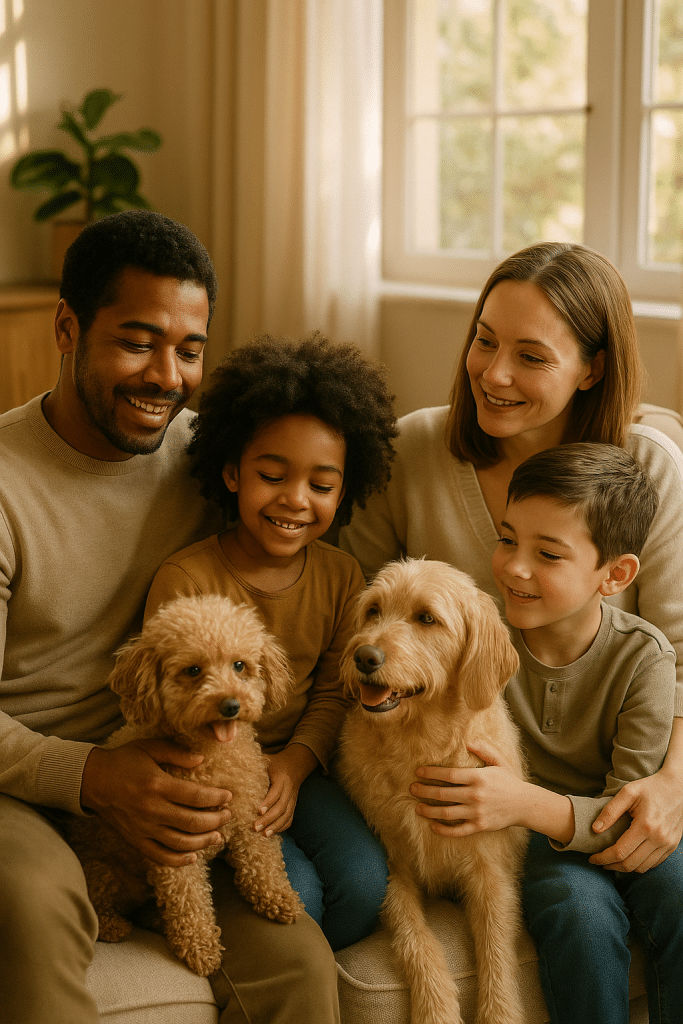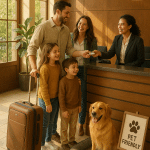If you’re part of a family excited to welcome a furry friend but worried about allergies, you’re not alone. Hypoallergenic dogs have become increasingly popular because they offer the chance to enjoy the love and companionship of a dog while minimizing allergy triggers. As someone who has spent years working with families and allergy experts, I understand just how challenging it can be to find a pet that fits everyone’s needs—especially when allergic reactions can make or break the experience.
In this comprehensive guide, I’ll walk you through everything you need to know about hypoallergenic dogs. From understanding what ‘hypoallergenic’ truly means and debunking common myths to highlighting the top five breeds that work well for families with allergy concerns, I’ve got you covered. We’ll dive into the science behind allergens, explore detailed grooming and training tips, and provide practical advice on creating a pet-friendly, allergy-conscious home. Whether you live in a cozy apartment or a bustling family house, this article will help you make an informed choice—because everyone deserves the joy of owning a dog without the sniffles and sneezes.
Understanding Hypoallergenic Dogs: What Allergy-Friendly Really Means
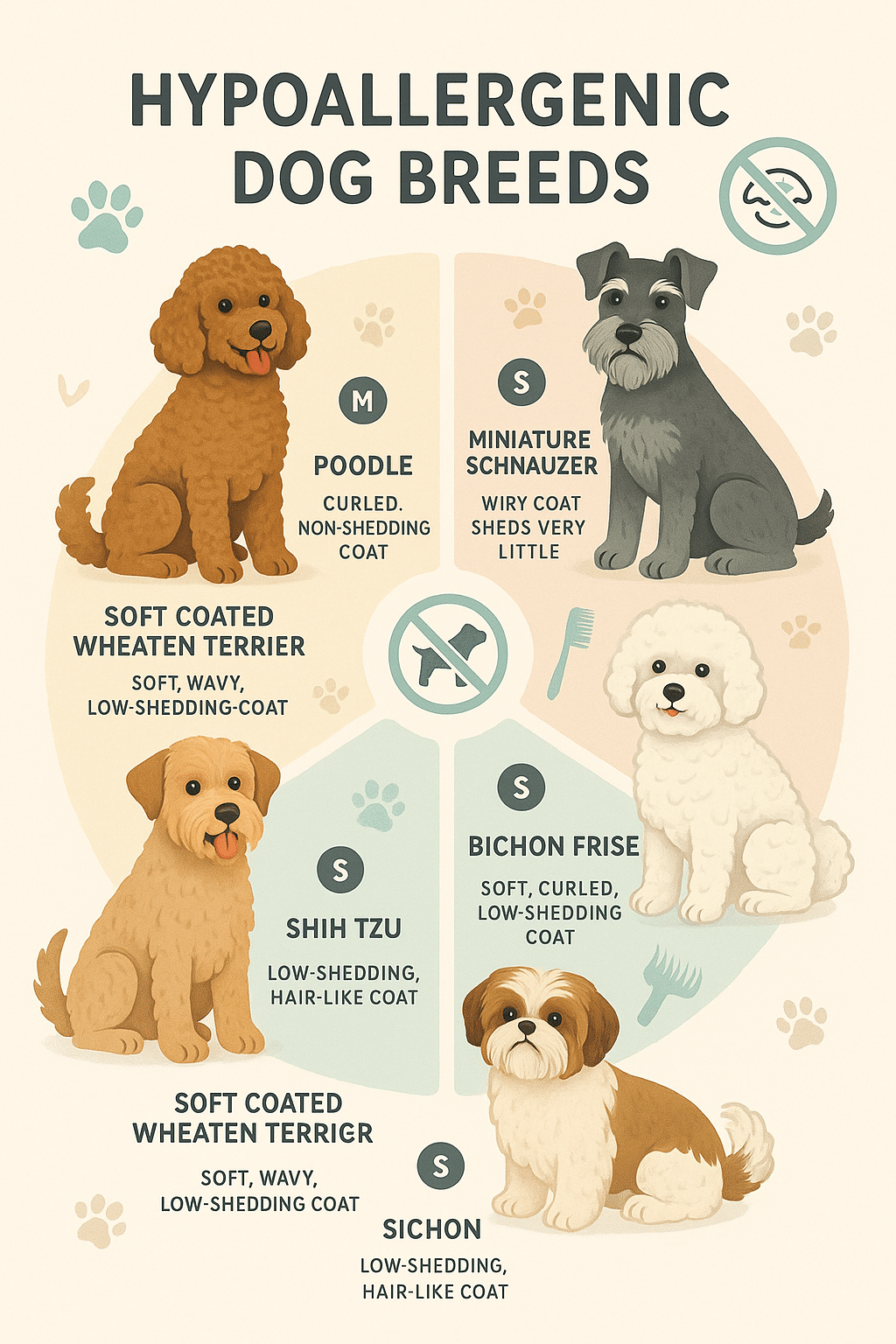
The Science Behind Allergens and Dog Dander
You might be wondering: why are some dogs considered hypoallergenic, and what exactly triggers allergies? The culprits are proteins found in a dog’s skin cells, saliva, and urine, rather than the fur itself. When these proteins—often attached to dander (tiny flakes of skin)—become airborne, they can cause allergic reactions in sensitive individuals.
Dog dander is notoriously sticky, clinging to furniture, carpets, and clothing, which makes controlling exposure tricky. However, certain dogs produce fewer allergens or shed less dander into the environment. These breeds tend to have hair types that trap dander rather than releasing it. For example, curly or woolly coats typically hold onto dander.more effectively than straight, shedding fur.
Why No Dog Is 100% Hypoallergenic
It’s important to understand that no dog is 100% hypoallergenic. Even dogs bred to be “low shedding” still produce some allergens. The term hypoallergenic simply means “less likely to cause allergic reactions.” So, before deciding to bring a dog home, families with allergies should spend time with the breed of interest to gauge personal reactions.
Advancements in genetics and grooming can help reduce allergens, but individual sensitivity varies widely. For people with severe allergies or asthma, consulting an allergist before choosing a hypoallergenic dog is a wise step.
Common Misconceptions About Hypoallergenic Dogs
Many myths surround hypoallergenic dogs. One common misconception is that non-shedding dogs don’t shed hair at all—which isn’t true. These dogs shed less and their hair is trapped in their coats, but periodic shedding still occurs. Another myth says that neutering or certain diets reduce allergens; while these can influence shedding slightly, they are not cure-alls.
Families should also know that a dog’s size doesn’t necessarily correlate with being hypoallergenic. Small dogs can produce as many allergens as larger dogs. The key difference lies in coat type, grooming, and allergen output.
Top 5 Hypoallergenic Dog Breeds for Families
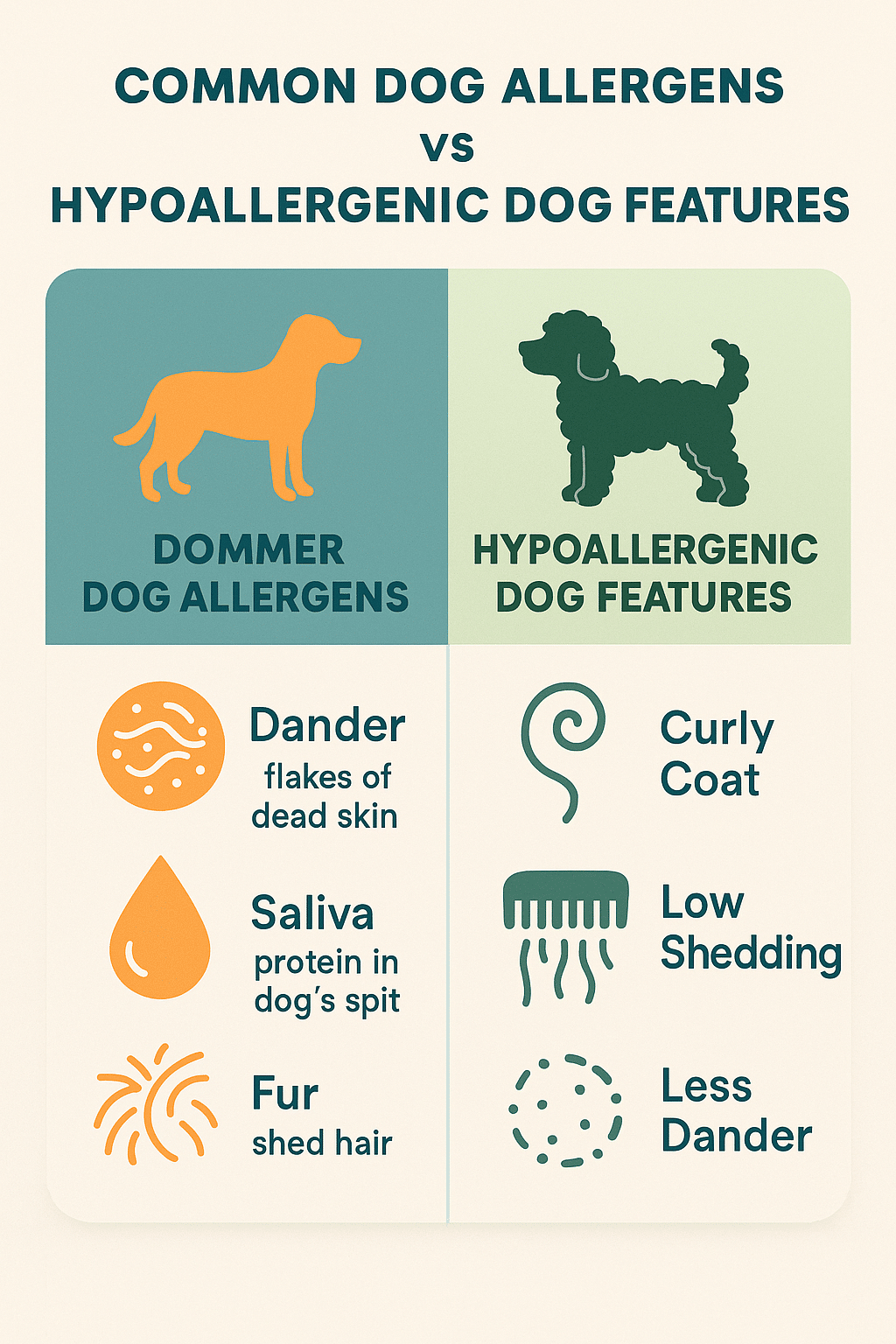
Poodle: The Versatile Allergy-Friendly Companion
Coat Type and Shedding Characteristics
Poodles are often the first breed that comes to mind when discussing hypoallergenic dogs—and for good reason. Their tightly curled, woolly coats trap dander and loose hair, preventing much of it from becoming airborne. Poodles shed very little, making them ideal for allergy sufferers.
Suitability for Families with Children
Poodles have a playful yet gentle demeanor. They’re highly intelligent and love interaction, making them excellent companions for kids. Their medium energy level means they enjoy both energetic play and calm cuddle time.
Training and Temperament Insights
Training a Poodle is typically a breeze. Their high intelligence makes them quick learners who respond well to positive reinforcement. They thrive with mental stimulation and develop strong bonds with family members, which makes obedience training and socialization easier.
Bichon Frise: Small Size, Big Personality
Grooming Needs and Allergy Considerations
Bichon Frises sport a curly, dense coat that sheds minimally and traps dander effectively. However, their grooming should be regular—a thorough combing every day or two, paired with professional grooming every 4 to 6 weeks, helps keep allergens at bay and their coat healthy.
Apartment and Family-Friendly Traits
Their small size and adaptable nature make Bichons perfect for apartment living or houses with limited space. They are cheerful, affectionate, and do well with children, providing endless family fun without overwhelming energy.
Schnauzer: The Protector with Minimal Shedding
Breed Variations: Miniature, Standard, and Giant
Schnauzers come in three sizes—Miniature, Standard, and Giant—providing options for various living spaces and family sizes. All varieties share a wiry, dense coat that sheds very little, helping reduce allergen spread.
Interaction with Kids and Other Pets
This breed is known for loyalty and protectiveness. Schnauzers are excellent watchdogs but also gentle and playful with kids when properly socialized. They typically get along well with other pets, especially if raised together.
Portuguese Water Dog: Athletic and Allergy-Safe
Exercise and Training Requirements
Portuguese Water Dogs are energetic and highly trainable. Their curly, waterproof coat is great at holding dander, but they require regular exercise to stay balanced. This breed loves water activities, so families who enjoy an active lifestyle often get along famously with them.
Managing Coat Care for Allergen Control
Their coat needs weekly brushing and professional grooming every two to three months. Bathing too often can strip natural oils, but regular grooming helps with shedding control and allergen reduction.
Soft Coated Wheaten Terrier: Friendly and Low-Allergen
Personality and Social Behavior
The Wheaten Terrier is a friendly, happy breed that’s perfect for families seeking an outgoing and loving dog. Their single-layered coat sheds minimally and releases fewer allergens.
Grooming and Maintenance Tips
Wheaten Terriers require brushing multiple times a week to prevent matting, along with professional grooming every eight weeks. Maintaining a clean coat reduces allergen buildup and protects sensitive family members.
Key Factors in Choosing a Hypoallergenic Dog for Your Family
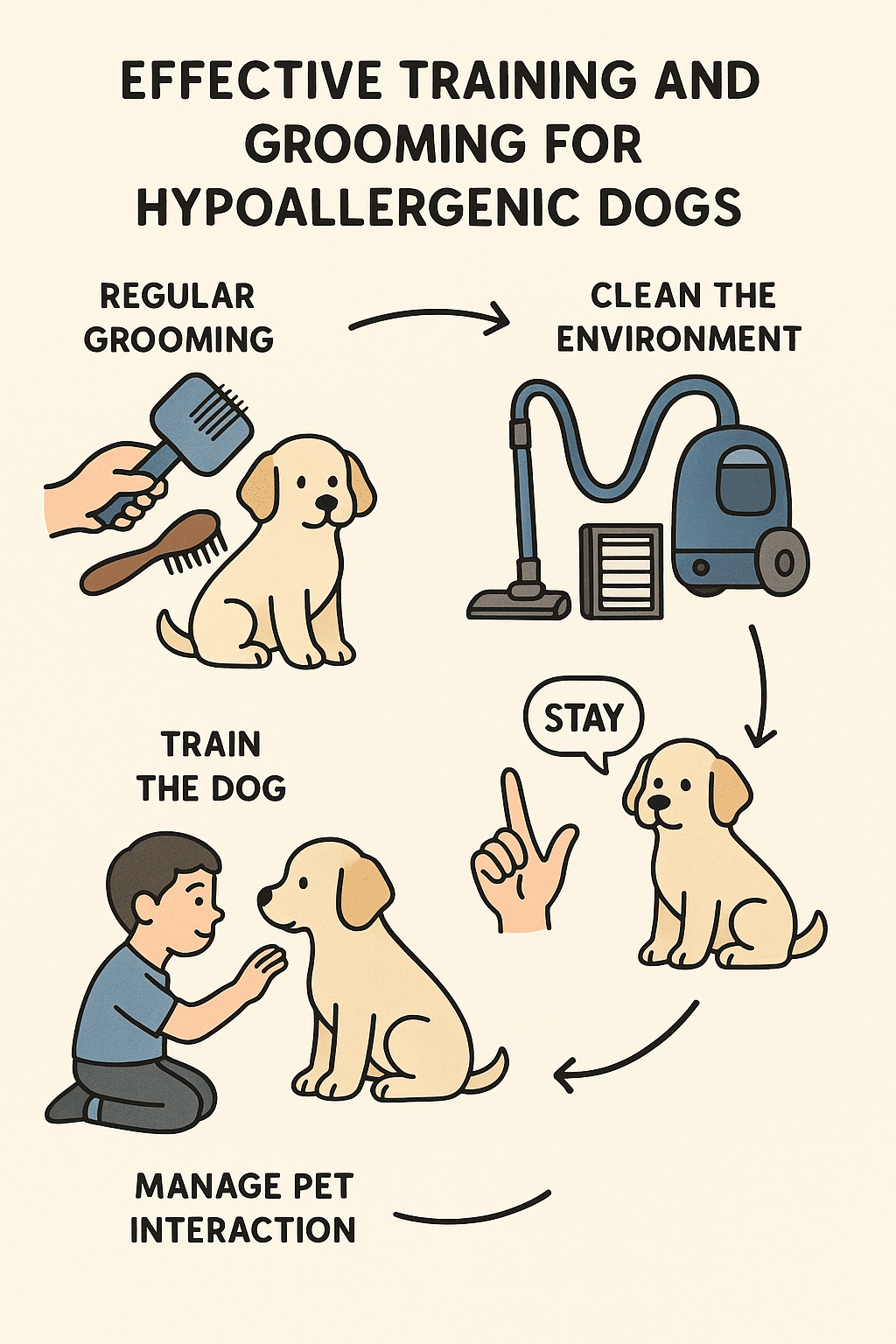
Assessing Allergy Severity and Family Needs
Before choosing your dog, it’s essential to assess how severe your allergies are. Spend time with the breed in various settings to see how your body reacts. If you have young children, observe whether the dog’s temperament suits active, sometimes noisy, play. Adults and kids with sensitivities may also require different care levels.
Living Environment Considerations: Apartments to Large Homes
Apartment dwellers should consider smaller hypoallergenic breeds like Bichon Frises or Miniature Schnauzers for space and quietness. Families with larger homes might enjoy an energetic Portuguese Water Dog or Standard Schnauzer that gets more room to roam.
Compatibility with Children and Other Pets
Choose a dog known for being patient with kids and sociable with other pets. Poodles and Wheaten Terriers are wonderful examples of breeds that integrate well into busy family lives without triggering allergies.
Essential Grooming and Hygiene Practices to Minimize Allergens
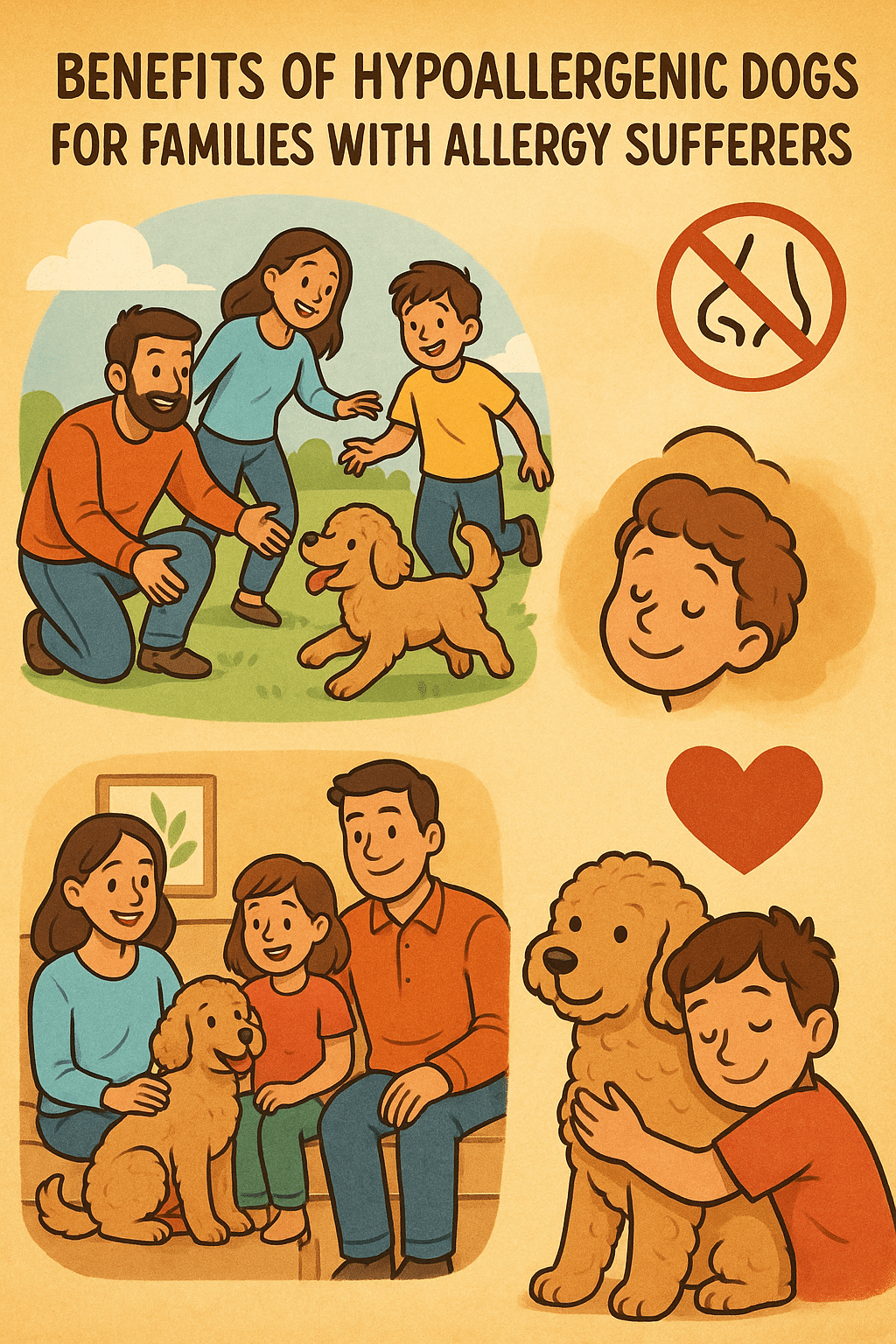
Effective Dog Grooming Techniques for Allergen Reduction
Regular grooming is your first line of defense against allergens. Daily brushing (with breed-specific brushes) removes loose hair and dander trapped in the coat. Using hypoallergenic shampoos during baths can soothe sensitive skin and wash away allergens.
Home Cleaning and Allergen Control Strategies
It’s crucial to keep your living space clean. Vacuum frequently with HEPA filters, use air purifiers, and wash your dog’s bedding regularly. Designating dog-free zones in bedrooms helps reduce nighttime allergy symptoms.
Role of Professional Groomers and Bathing Frequency
Professional groomers can provide deep cleaning and coat management not achievable at home. Bathing frequency varies by breed but generally every 4 to 6 weeks is sufficient, avoiding over-bathing that dries the skin and leads to more shedding.
Training Tips Tailored for Hypoallergenic Dog Breeds
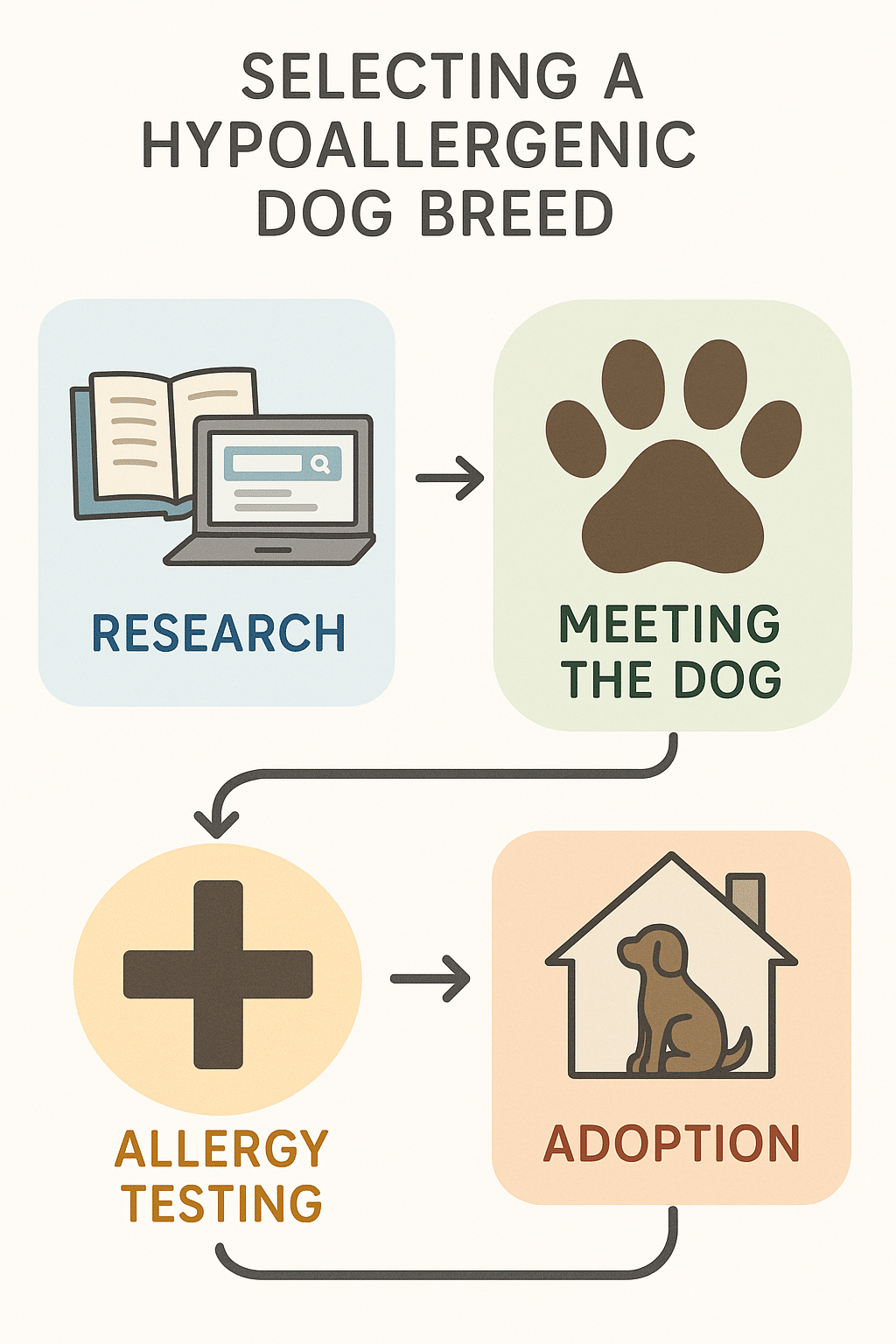
Basic Commands and Positive Reinforcement Methods
Consistent training builds a strong bond with your pet. Hypoallergenic dogs, especially Poodles and Portuguese Water Dogs, respond well to positive reinforcement such as treats, praise, and play. Focus on commands like “sit,” “stay,” and “come” to ensure safety and manners.
Addressing Separation Anxiety and Socialization
Many allergy-friendly breeds can develop separation anxiety if left alone too long. Start socialization early by exposing your dog to different people, environments, and pets to build confidence and reduce stress.
Creating a Pet-Friendly and Allergy-Conscious Household Routine
Set routines for grooming, exercise, and feeding to create structure. Wash your hands after petting your dog and consider using allergen-control sprays on your dog’s coat if recommended by your vet.
Nutrition and Health Care for Hypoallergenic Dogs
Best Dog Food Choices for Allergic Pets
A balanced diet rich in omega fatty acids supports skin health, which can reduce shedding and dander. Grain-free or limited-ingredient diets sometimes help if your dog has food sensitivities, but always consult your vet first.
Regular Vet Check-Ups and Allergy Management
Frequent veterinary visits ensure your hypoallergenic dog is healthy and that early signs of allergies or skin conditions are addressed promptly. Vets can recommend treatments or supplements that promote healthy coats.
Supplements and Diet Adjustments to Support Skin and Coat Health
Supplements like fish oil, vitamin E, and biotin can improve coat condition, minimizing the allergen load. Carefully monitored diet adjustments may also help reduce skin irritation and excessive shedding, enhancing your family’s comfort.
Managing Allergies: Tips for Families Living with Hypoallergenic Dogs
Allergy-Friendly Practices for Daily Life
Besides grooming and home cleaning, wearing allergen-trapping clothes, washing hands often, and using air purifiers with HEPA filters reduce exposure. Defined play areas and dog beds help contain allergens to one space.
Monitoring and Adjusting Allergen Exposure Over Time
Allergy tolerance can fluctuate. Keep a diary of symptoms linked to your dog’s activities or grooming schedule, adjusting routines to reduce reactions. For example, more frequent grooming during shedding season might be necessary.
When to Consider Medical Advice for Allergy Symptoms
If family members experience increased sneezing, wheezing, or skin irritation, consult an allergist. Sometimes allergy shots or medications are necessary to maintain a comfortable environment for everyone.
The Unique Perspective: Emotional Benefits of Hypoallergenic Dogs in Allergy-Prone Families
Psychological Comfort and Pets’ Role in Family Wellness
Beyond physical health, hypoallergenic dogs offer incredible emotional support. Their companionship can reduce stress, anxiety, and loneliness, especially in allergy-prone families who might otherwise avoid pets altogether.
How Hypoallergenic Dogs Encourage Active, Social Lifestyles
Taking care of a dog encourages daily walks, play, and social interaction, enriching your family’s lifestyle. Dogs like the Portuguese Water Dog inspire outdoor fun and keep everyone moving.
Balancing Allergy Management with Quality Pet Interaction
Working smart through grooming, home care, and allergy control means your family can enjoy deep connections with your dog without constant allergy interruptions. With the right breed and care, hypoallergenic dogs bring joy and health benefits alike.
FAQs
1. What are the best hypoallergenic dog breeds for families?
Top breeds include Poodles, Bichon Frises, Schnauzers, Portuguese Water Dogs, and Soft Coated Wheaten Terriers—each with low shedding and family-friendly temperaments.
2. How often should I groom my hypoallergenic dog to reduce allergens?
Most hypoallergenic dogs benefit from brushing daily or every other day and professional grooming every 4 to 8 weeks depending on breed and coat type.
3. Can hypoallergenic dogs trigger asthma attacks?
While hypoallergenic dogs produce fewer allergens, some individuals with asthma may still react. Regular cleaning and allergen control can reduce risks significantly.
4. Are small hypoallergenic dog breeds good for apartments?
Yes, breeds like Bichon Frises and Miniature Schnauzers adapt well to apartment living due to their size and energy levels.
5. What training techniques work best for hypoallergenic dogs?
Positive reinforcement, consistent commands, and early socialization help these intelligent breeds thrive in family environments.
Quick Takeaways/Key Points
- Hypoallergenic dogs are breeds that shed less and produce fewer allergens but are not allergen-free.
- The top five family-friendly hypoallergenic breeds are Poodles, Bichon Frises, Schnauzers, Portuguese Water Dogs, and Soft Coated Wheaten Terriers.
- Regular grooming and home cleaning reduce allergen spread effectively.
- Proper training and socialization improve behavioral outcomes and strengthen family bonds.
- Nutrition and vet care support coat health, minimizing allergy triggers.
- Allergy severity varies; spend time with breeds before adopting to gauge reaction.
- Hypoallergenic dogs enhance family wellness emotionally and physically with the right care.
In closing, choosing the right hypoallergenic dogs for your family isn’t just about avoiding allergens—it’s about finding a loving companion that fits your lifestyle and brings joy to your home. By understanding the science behind allergens, carefully selecting from the top breeds, and committing to grooming, training, and health care, you can create a vibrant, allergy-conscious household where your dog feels loved and your family feels comfortable. Ready to welcome that furry bundle of joy? Start your journey today with confidence—and get ready for many happy years ahead!

